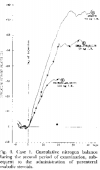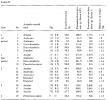Type-IIx
Member
Conspicuous consumption is the public consumption or usage of costly goods, services, or leisure activities out of the conscious or unconscious motive to display or enhance one’s own social status, to indicate one’s ability to pay for it and hence displaying one’s own wealth despite the possibility to consume cheaper alternatives which yield the same functionality. So in principle conspicuous consumption is unnecessary (and often wasteful) consumption from a rational point of view which does not satisfy basic economic needs.
(Conspicuous Consumption (Marketing and Economics))
______________________________________
@PeterBond wrote a thorough analysis of Primo, emphasizing the prevalence of 3α-HSD in muscle tissue, its effect on muscle protein synthesis and net protein balance in muscle tissue (where it matters) versus the Hershberger Assay's results. The HA's weaknesses in teasing out the local (muscle) metabolism of Primo versus the results showing an efficacious anabolic:androgenic profile in rats doesn't tell the full picture (Methenolone (Primobolan) and its 3α-reduction)
Here is a graph from a 1965 study [1] which analyzed various AAS under strictly controlled conditions-- specifically Primo, Deca, Dbol, Anadur (nandrolone hexylphenylpropionate, a 21-day half life form of nandrolone), and Androxan (oral similar to androstanozole). It is a very strong study design that studied the human effects of the compared AAS under strictly controlled conditions. That is, patients were tube-fed, immobilized, and the researchers could tease out the anabolic effects of the AAS studied with dietary manipulation (protein and caloric intake were manipulated) precision:

In one patient (Case 1) a 100mg bolus of Primo was administered resulting in an uncomplicated 16 day positive nitrogen balance with a total nitrogen retention of 30.8g [1] on a caloric surplus (55%>BMR) and protein intake of 1.65 g/kg b.w. See Figure 1(N) [above].
This basically matched the nitrogen retention of a woman on an equivalent caloric and protein diet (45%>BMR), 1.5 g/kg b.w (30.6 g, 18 day positive nitrogen balance) [1].
The following Table shows that Primo at 100mg increased lean tissue by about 1/2 the amount as 50mg (!) of Deca:

Some studies suggest (now this is very dependent upon factors besides the compound) that Primo may not be the best AAS for muscular strength or speed, if athleticism is important to the user.
Czela et al. studied Primo's effects on cardiac remodeling [2]. In this study, the findings demonstrated that Primo profoundly accelerates the transition from fast (Type II) to slow (Type I) isoform myofiber types in the case of stimulation for cardiomyoplasty. This may be partly compound-specific, but is certainly also muscle-, species-, and stimulation- specific (latissmus dorsi - a fast twitch-predominant muscle typically, sheep). It is, however, certainly evidence against Primo being an appropriate choice for strength sport; however, not a definitive finding.
Risk-Reward (Cost/Benefit) Profile of Primo (Personal View)
+ anecdotes of only mild negative impacts on LDL, HDL or even perfect blood work
+ anecdotes of particular aesthetic/mental benefits (roundness, dry, psychological QoL metrics) likely impossible to measure, no, before/after pics are not evidence!
+/- anecdotes of serum E2 reduction
versus:
- evidence (published) of comparatively low anabolic effects in human skeletal muscle (arguably only 25% as anabolic in skeletal muscle as deca!)
- evidence (published) of preferential slow rather than fast-muscle fiber transformation
- high, viscous oil volume
- financial cost/expense
I REALLY want to give Primo a real fair shake, but I feel like only bloodwork can lend much support to the anecdotes. This is just my impression after a bit of research and finding this cool study by Saarne et al.
____________
References:
[1] Saarne, A., Bjerstaf, L., & Ekman, B. (1965). Studies on the Nitrogen Balance in the Human during Long-term Treatment with Different Anabolic Agents under Strictly Standardized Conditions. Acta Medica Scandinavica, 177(2), 199–211. doi:10.1111/j.0954-6820.1965.tb01822.x
[2] Czesla, M., Mehlhorn, G., Fritzsche, D., & Asmussen, G. (1997). Cardiomyoplasty — Improvement of Muscle Fibre Type Transformation by an Anabolic Steroid (Metenolone). Journal of Molecular and Cellular Cardiology, 29(11), 2989–2996. doi:10.1006/jmcc.1997.0543
(Conspicuous Consumption (Marketing and Economics))
______________________________________
@PeterBond wrote a thorough analysis of Primo, emphasizing the prevalence of 3α-HSD in muscle tissue, its effect on muscle protein synthesis and net protein balance in muscle tissue (where it matters) versus the Hershberger Assay's results. The HA's weaknesses in teasing out the local (muscle) metabolism of Primo versus the results showing an efficacious anabolic:androgenic profile in rats doesn't tell the full picture (Methenolone (Primobolan) and its 3α-reduction)
Here is a graph from a 1965 study [1] which analyzed various AAS under strictly controlled conditions-- specifically Primo, Deca, Dbol, Anadur (nandrolone hexylphenylpropionate, a 21-day half life form of nandrolone), and Androxan (oral similar to androstanozole). It is a very strong study design that studied the human effects of the compared AAS under strictly controlled conditions. That is, patients were tube-fed, immobilized, and the researchers could tease out the anabolic effects of the AAS studied with dietary manipulation (protein and caloric intake were manipulated) precision:

In one patient (Case 1) a 100mg bolus of Primo was administered resulting in an uncomplicated 16 day positive nitrogen balance with a total nitrogen retention of 30.8g [1] on a caloric surplus (55%>BMR) and protein intake of 1.65 g/kg b.w. See Figure 1(N) [above].
This basically matched the nitrogen retention of a woman on an equivalent caloric and protein diet (45%>BMR), 1.5 g/kg b.w (30.6 g, 18 day positive nitrogen balance) [1].
The following Table shows that Primo at 100mg increased lean tissue by about 1/2 the amount as 50mg (!) of Deca:

Some studies suggest (now this is very dependent upon factors besides the compound) that Primo may not be the best AAS for muscular strength or speed, if athleticism is important to the user.
Czela et al. studied Primo's effects on cardiac remodeling [2]. In this study, the findings demonstrated that Primo profoundly accelerates the transition from fast (Type II) to slow (Type I) isoform myofiber types in the case of stimulation for cardiomyoplasty. This may be partly compound-specific, but is certainly also muscle-, species-, and stimulation- specific (latissmus dorsi - a fast twitch-predominant muscle typically, sheep). It is, however, certainly evidence against Primo being an appropriate choice for strength sport; however, not a definitive finding.
Risk-Reward (Cost/Benefit) Profile of Primo (Personal View)
+ anecdotes of only mild negative impacts on LDL, HDL or even perfect blood work
+ anecdotes of particular aesthetic/mental benefits (roundness, dry, psychological QoL metrics) likely impossible to measure, no, before/after pics are not evidence!
+/- anecdotes of serum E2 reduction
versus:
- evidence (published) of comparatively low anabolic effects in human skeletal muscle (arguably only 25% as anabolic in skeletal muscle as deca!)
- evidence (published) of preferential slow rather than fast-muscle fiber transformation
- high, viscous oil volume
- financial cost/expense
I REALLY want to give Primo a real fair shake, but I feel like only bloodwork can lend much support to the anecdotes. This is just my impression after a bit of research and finding this cool study by Saarne et al.
____________
References:
[1] Saarne, A., Bjerstaf, L., & Ekman, B. (1965). Studies on the Nitrogen Balance in the Human during Long-term Treatment with Different Anabolic Agents under Strictly Standardized Conditions. Acta Medica Scandinavica, 177(2), 199–211. doi:10.1111/j.0954-6820.1965.tb01822.x
[2] Czesla, M., Mehlhorn, G., Fritzsche, D., & Asmussen, G. (1997). Cardiomyoplasty — Improvement of Muscle Fibre Type Transformation by an Anabolic Steroid (Metenolone). Journal of Molecular and Cellular Cardiology, 29(11), 2989–2996. doi:10.1006/jmcc.1997.0543
Last edited:


